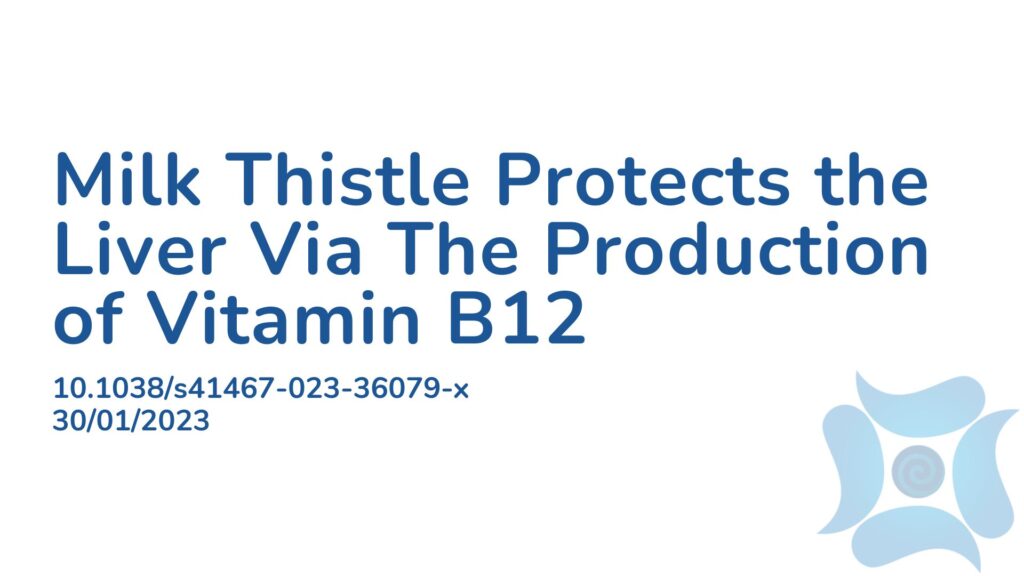Summary:
Silymarin, commonly referred to as milk thistle, contains flavonolignans and other polyphenolic compounds that exert anti-oxidant and liver protective properties and can improve the health of individuals with non-alcoholic fatty liver disease (NAFLD). Although silymarin has been used traditionally for centuries, its mechanism of action remains unclear. This study looks at the role of the gut microbiota when silymarin is used to treat the liver. The researchers found that there are significant changes to the microbiome after consuming silymarin and that silymarin helps the production of bacterial vitamin B12. This then plays a protective role against liver fat accumulation. Due to this research, the authors were able to identify a mechanism of action explaining why silymarin has the ability to reduce lipids via the production of vitamin B12 in the gut microbiota.
Abstract:
Silymarin has been used for improving hepatic damage and lipid disorders, but its action mechanism remains to be clarified. Here, we investigate the contributions of the gut microbiota to the improvement of liver lipid metabolism by silymarin. We find i) strong and significant microbial shifts upon silymarin but not silibinin treatment; ii) over 60% variations of liver fat are explained by silymarin-induced bacterial B12 production in male rats but not in male germ-free mice; iii) fecal microbiota transplantation confirms their protective roles against liver fat accumulation; iv) upregulation of one-carbon metabolism and fatty acid degradation pathways are observed based on the liver transcriptome analyses; and v) in humans the delta changes of serum B12 associate negatively with the fluctuations of serum triglycerides. Overall, we reveal a mechanism of action underpinning the lipid-lowering effect of silymarin via the gut microbiota and its vitamin B12 producing capabilities.
Article Publication Date: 30/01/2023
DOI: 10.1038/s41467-023-36079-x



